ART
Outcomes:
1.Students select artworks browsing Europeana
2.Students describe/interprete artworks
3.Students apply copyright regulations
4.Students integrate knowledge in broader artistic context
Portfolio #europeana4education
17 SDGs in Art
https://www.bulbapp.com/borisgrubisic
LITERATURE
Outcomes:
1.Students select appropriate literal pieces of their national literature
2.Students describe the plot writing in their mother tongue and English
3.Students compare and evaluate their choices
4.Students correlate SDGs with Literature
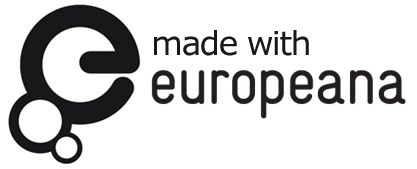
SDG 1 (NO POVERTY): http://bit.ly/31ZHNYY
Tinted drawing by Giovanni Boccaccio showing Poverty strangling fortune while in the background Andalo del Negro(1260-1334,a medieval Italian astronomer and geographer) is delivering a lecture in a safety of a castle.
While intellectuals talk and debate,in other lives the battle to survive rages on unnoticed.
Poverty should be ended everywhere,every human must fulfil the basic needs for food,shelter,healthcare and education.
SDG 2 (ZERO HUNGER): http://bit.ly/2SVrY1A
An oil painting by Portuguese painter Obidos showing a table full of different sweets,confectionaries,flowers,clay jar......richness of this scene is what this second goal aims to.
Hunger is not an option,everybody should have enough food.
https://app.emaze.com/@AOZZRWLCL/tinted-drawing-from-bl-harley
SDG 1/2 in European literature📚📚📚
| SDG1:NO POVERTY | SDG 2:ZERO HUNGER |
| Prosjaci i sinovi (Ivan Raos)1971 | Na kamenjaru,Vjekoslav Kaleb,1940 |
| Na klancu, Ivan Cankar, 1903 | Boj na požiralniku, Prežihov Voranc, 1935 |
| Um olhar sobre a pobreza (I.Baptista,P.Perista,P.Carrilho) | A sopa da pedra (Miguel Borges) |
| Promessi Sposi (Manzoni) | I Malavoglia (Verga) |
| Lazarillo de Tormes | El Hambre(Martin Caparros) |
| Wybor wierszy (Maria Konopnicka) | Za chlebem (H.Sienkiewicz) |
| Ekmek Kavgasi (Orhan Kemal) | Tirpan (F.Baykurt) |
| Nana (Zola) | Les Miserables (Victor Hugo) |
| The Alexandrians: Life in the Nile's country (Despoina Chantzi) | The end of Hunger (Lina Rokou) |
Team 1 recommends these books for reading on topic of SDG 1. Enjoy !
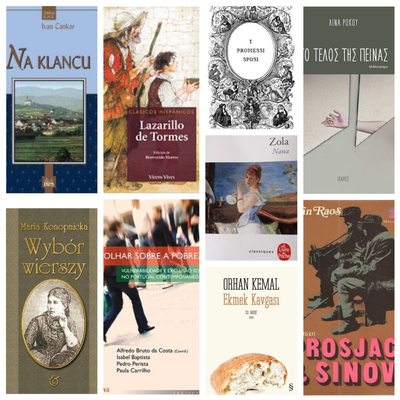
Team 1 recommends these books for reading on topic of SDG 2.Enjoy !
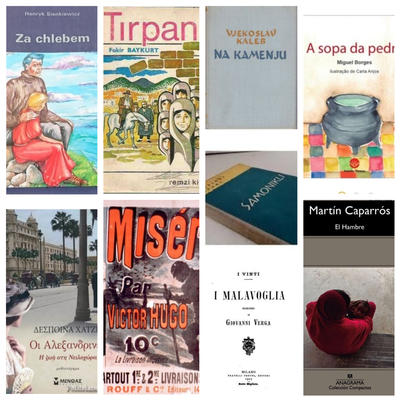
To be continued (with other SDGs) till June.....
http://bit.ly/2TtW39I
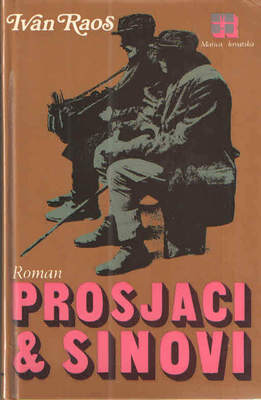
PROSJACI I SINOVI
Kultno djelo Ivana Raosa,roman po kojemu je snimljena iznimno popularna istoimena televizijska serija,vjerno prikazuje životne situacije i način života naših ljudi u dinarskim predjelima.Radnja prati obitelj prosjaka u njihovim zgodama i nezgodama te borbi za opstankom.Tradicionalni prosjački,galanterski i torbarski zanat,povremeni šverc i krađe naslijeđe su ove obitelji u borbi protiv siromaštva i viziji imućnije,blagodatnije budućnosti.
BEGGARS AND THE SONS
This all time classic, a novel that was adapted into an extremely popular TV show, tells a story of our people living in the Dinara mountain.
The story revolves around family of beggars in their incidents and accidents. Traditional begging and pickpocketing trade, occasional smuggling as well as theft are this family's heirloom in their struggle against poverty and for securing a wealthier, safer future.
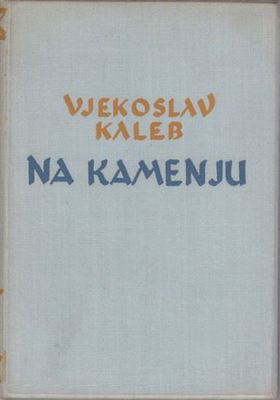
NA KAMENJU
Zbirka novela ruralne tematike nastala u želji autora da prikaže,pronicivim opažanjima i humorom,tjeskobnu egzistencijalnu dramu čovjeka u kamenjaru Dalmatinske zagore.Posebno se izdvaja istoimena prozna drama s gotovo naturalističkim opisima gladi i majčinome bijesu prema djeci koja su kradomice polizala brašno.
ON THE ROCKS
Collection of short stories with rural subject depicting anxious, existential drama of men on the carst of Dalmatian hinterland. <<
SDG 1/2 in European literature - Portugal
#europeana4education
https://www.europeana.eu/portal/en/record/10501/bib_rnod_22414.html?q=portuguese+poems#dcId=1582753733484&p=1
One of the most famous writers in Portuguese Literature. It is also part of the curriculum at schools within the Portuguese subject.
Book - SDG 2 - Portugal
http://contamecomoera.blogspot.com/2010/03/sopa-do-sidonio.html
Book - SDG 1 - Portugal <
/p>
SDG 1/2 in European literature - ITALY
Alessandro Manzoni- Europeana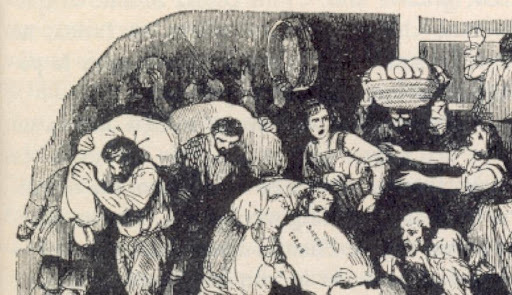
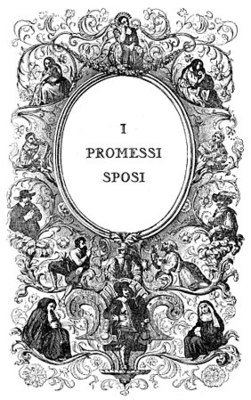 <
<
/p>
TG PROMESSI SPOSI
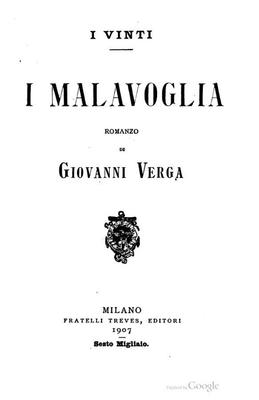
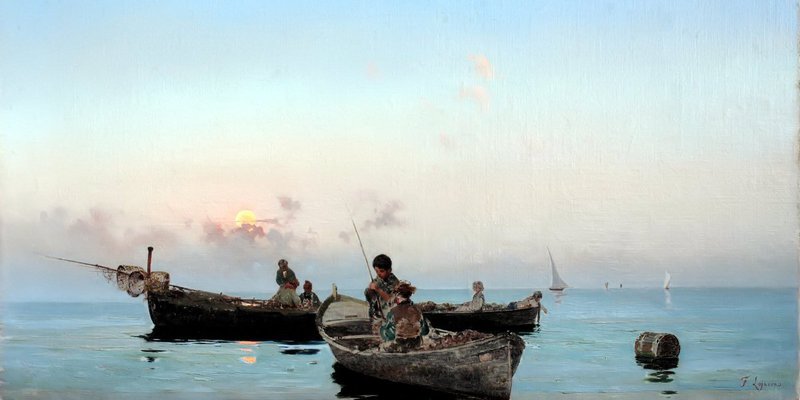
- ebook Malavoglia
-
Polish Literature
HENRYK SIENKIEWICZ
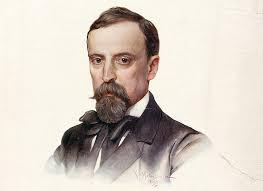
-
was a Polish journalist, novelist and Nobel Prize laureate. He is best remembered for his historical novels, especially for his internationally known best-seller Quo Vadis. His early works focused on three themes: the oppression and poverty of the peasants ("Charcoal Sketches", 1877); criticism of the partitioning powers ("Z pamiętnika korepetytora", "Janko Muzykant" ("Janko the Musician", 1879); and his voyage to the United States ("Za chlebem", "After bread", 1880). His most common motif was the plight of the powerless: impoverished peasants, schoolchildren, emigrants
"After bread"-by H. Sienkiewicz
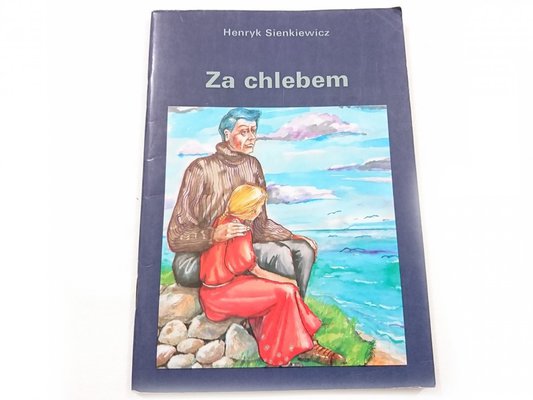
It ia a story of Polish emigrant life to America. The main characters are Wawrzon Toporek and his daughter Marysia. They are poor peasant who decide to give up their current life in Poland after they lose their farm. They hope to succeed as they are told that farms are given there for free and people get rich very quickly. When they come to the American West, it turns out that they cannot get used to living there, they both miss Poland and the girl misses her boyfriend in Poland. They suffer toil, trying to make a new life. When the father dies, the daughter goes to New York wher she goes mad and dies from hunger in the street.
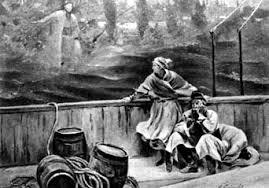
"Za chlebem"- W tym utworze autor podjął temat polskiej emigracji zarobkowej. Główni bohaterowie – Wawrzon Toporek i jego córka Marysia są rolnikami, którzy pozbyli się gospodarstwa w Lipińcach i emigrują do Ameryki. Liczą na to, że znajdą tam swoje miejsce i poprawią swoją sytuację ekonomiczną. Jednak, gdy docierają na miejsce, okazują się być całkowicie nieprzystosowani do lokalnych warunków. Nie potrafią odnaleźć się na emigracji, coraz bardziej tęsknią za krajem.
Maria Konopnicka-was a Polish poet, novelist, children's writer, translator, journalist, critic, and activist for women''s right and for Polish independence.
POETRY
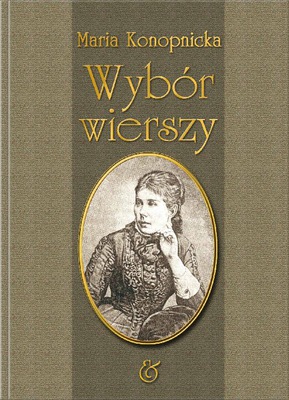
"JAŚ NIE DOCZEKAŁ"-“Jaś nie doczekał” to utwór, który opowiada o śmierci małego chłopca. Jaś – bo tak ów chłopiec miał na imię – umarł z powodu ubóstwa, w którym żył wraz ze swoim ojcem – wyrobnikiem. Mężczyzna zarabiał tak mało, że nie było go stać na poprawę warunków bytowych syna. Chłopiec jadł bardzo mało, ponieważ brakowało żywności. Przebywał też w zimnym, wilgotnym domu. Kiedy Jaś zachorował, ojciec chciał mu jak najszybciej pomóc. Sprowadzony lekarz powiedział, że poprawę można osiągnąć jedynie przez zmianę klimatu, w którym przebywa malec. Ojca nie miał pieniędzy, aby wynająć inne mieszkanie. Jaś umarł.
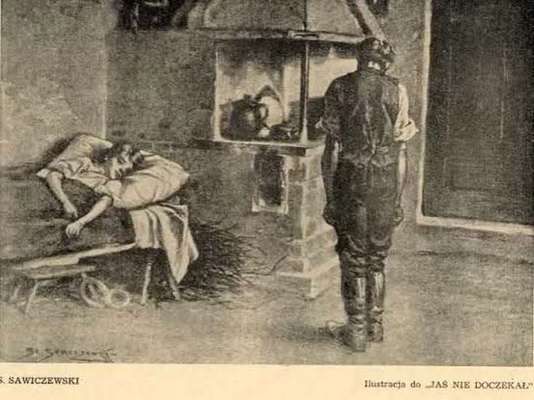
"JAŚ DID NOT SURVIVE"- it'a poem about a little boy called Jaś, who dies due to poverty. He lives with his father in extreme poverty. His father earns so little that they lack food. The boy does not eat much and lives in a cold and damp house. When the boys falls ill, his father wants to help him at once. The doctor tells the father that the boys needs better living conditions. The father has not got any money to rent a new house. The boy dies.
BURSA,TURKEY
SDG 1 and 2 in TURKISH LITERATURE
Bursa Muradiye Vocational and Technical High School
https://spark.adobe.com/page/wCvHkwBnRPzmk/
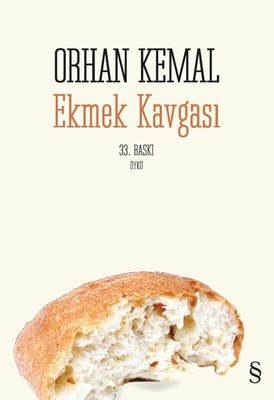
Orhan Kemal's stories and novels generally depict the lives of ordinary working people trying to hold on to their dignity in conditions of poverty or deprivation.
Orhan Kemal'in romanları ve hikayeleri genellikle yoklukta ve fakirlikte dahi özsaygılarını korumaya çalışan orta sınıf insanları anlatır.
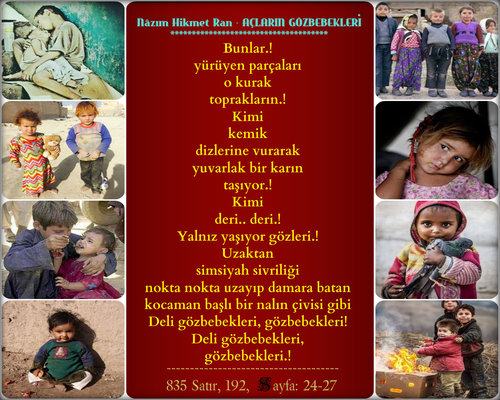
Our world famous poet Nazim Hikmet wrote this poem for poor children. He describes how weak they look, how hungry they are. He describes their empty bellies and shiny eyes, especially their penetrating eye pupils.
Dünyaca ünlü şairimiz Nazım Hikmet, bu şiiri fakir çocuklara yazmıştır. Onların ne kadar zayıf ve aç göründüğünü anlatmaktadır. Boş karınlarını, parlak gözlerini, özellikle de gözbebeklerini anlatır.
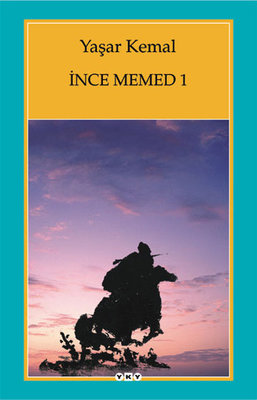
Ince Memed is the masterpiece of Yasar Kemal, one of the best Turkish writers. Memed is the main character who struggles against unwritten laws and poverty in his village.
Ince Memed Yaşar Kemal'in başyapıtlarından biridir. Memed köyündeki yazılı olmayan kurallara ve fakirliğe başkaldıran ana karakterdir.
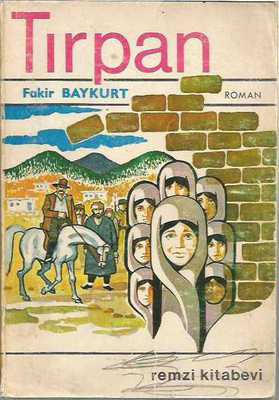
Fakir Baykurt is a Turkish writer and Fakir is his nickname which means "poor". Obviously he talks about poverty and hunger in his books.<
Fakir Baykurt eserlerinde fakirlik ve açlık temasını işlemiştir.
FRANCE
Nana an French orphan grew up in the 19th century in Paris, she struggled to survive in a merciless society, to feed and cure her little boy....Magnetic character in French literature, Nana arouses passions and hate and jealousy”
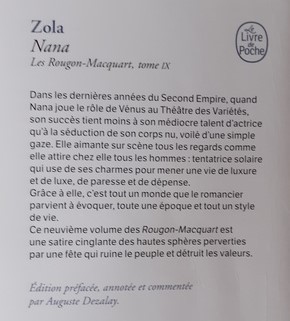
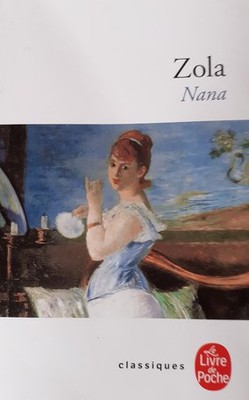
Dans ce roman emblématique de la littérature française qui décrit la vie de pauvres gens dans Paris et la France provinciale du xixe siècle, l'auteur s'attache plus particulièrement au destin du bagnard Jean Valjean.
C'est un roman historique, social et philosophique dans lequel on retrouve les idéaux du romantisme et ceux de Victor Hugo concernant la nature humaine.
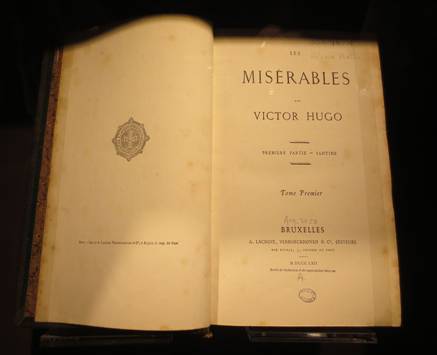
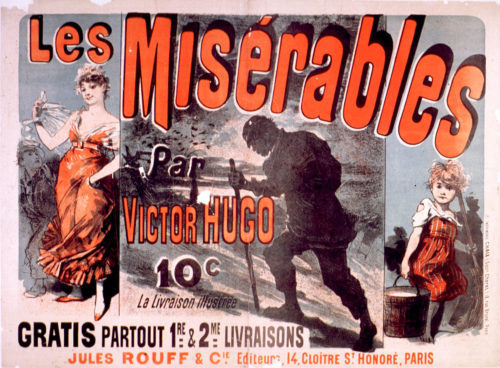
SDG 1/2 in European literature - Spanish<
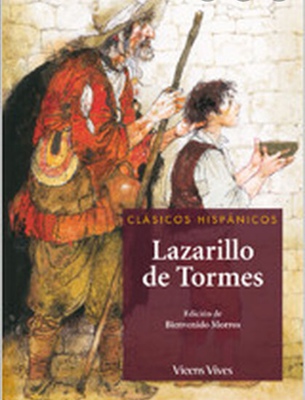
Una de las obras más importantes de la historia de la literatura española es, sin lugar a dudas, El Lazarillo de Tormes. Esta novela se incluye dentro del género de la picaresca y nos relata la vida de un joven de Salamanca que, debido a su humilde origen, se ve con la obligación de tener que trabajar para otros en calidad de sirviente o criado. Durante sus trabajos, Lázaro se verá con la necesidad de usar la picaresca y el ingenio para poder saciar su apetito y sobrevivir. El clérigo, el ciego o el escudero son algunos de los amos a los que tiene que servir Lazarillo y todos ellos terminan configurando su manera de vivir y su personalidad.
One of the most important works in the history of Spanish literature is, without a doubt, El Lazarillo de Tormes. This novel is included in the genre of picaresque and tells us about the life of a young man from Salamanca who, due to his humble origin, is forced to work for others as a servant or servant. During his work, Lázaro will face the need to use picaresque and ingenuity to be able to quench his appetite and survive. The cleric, the blind man or the squire are some of the masters that Lazarillo has to serve and they all end up configuring their way of life and their personality.<<
/p>
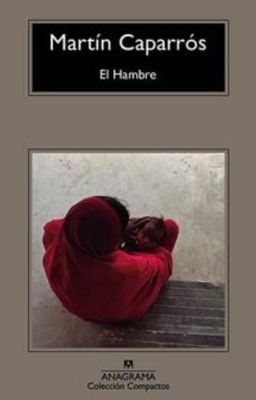
«No hay nada más frecuente, más constante, más presente en nuestras vidas que el hambre –y, al mismo tiempo, para la mayoría de nosotros, nada más lejos que el hambre verdadera.» Para entenderlo, para contarlo, Martín Caparrós viajó por la India, Bangladesh, Níger, Kenia, Sudán, Madagascar, Argentina, Estados Unidos, España. Allí encontró a quienes, por distintas razones, sufren hambre. El Hambre está hecho de sus historias, y las historias de quienes trabajan en condiciones muy precarias para paliarla, y las de quienes especulan con los alimentos y hambrean a tanta gente. Caparrós intenta, sobre todo, descubrir los mecanismos que hacen que casi mil millones de personas no coman lo que necesitan. El Hambre es un libro incómodo y apasionado, una crónica que piensa y un ensayo que cuenta y un panfleto que denuncia el apremio de una vergüenza sostenida y busca formas de terminar con ella.
"There is nothing more frequent, more constant, more present in our lives than hunger - and, at the same time, for most of us, nothing is further than true hunger." To understand it, to tell it, Martín Caparrós traveled through India, Bangladesh, Niger, Kenya, Sudan, Madagascar, Argentina, United States, Spain. There he found those who, for different reasons, suffer from hunger. Hunger is made of its stories, and the stories of those who work in very precarious conditions to alleviate it, and those of those who speculate on food and starve so many people. Caparrós tries, above all, to discover the mechanisms that make almost a billion people not eat what they need. Hunger is an uncomfortable and passionate book, a chronicle that thinks and an essay that counts and a pamphlet that denounces the constraint of a sustained shame and looks for ways to end it.
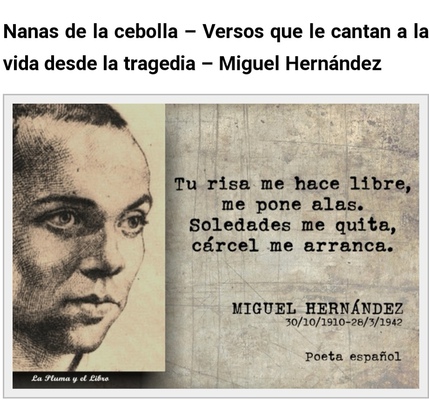
Este es uno de los poemas más conocidos, más importante es y, además, uno de los más tristes, personales y emotivos de la poesía de Miguel Hernández. En este caso, el poeta escribe un poema, una nana, cuya temática se basa en el conocimiento de las penurias que pasan su mujer y su hijo recién nacido mientras él está encarcelado. Sabe que las cebollas son la base de la alimentación en su casa.
La primera estrofa nos dice que el poeta está triste i nos hace saber lo que sufre su mujer y lo que él padece en la cárcel sin poder hacer nada. En su casa el hambre acecha y las cebollas son el único sustento. En la siguiente estrofa nos ofrece una imagen angustiosa en la que la leche que niño mama sabe a cebolla, lo que aumenta esa sensación de hambre, de pobreza y sufrimiento.
This is one of the best known poems, the most important is and, in addition, one of the saddest, personal and emotional poetry of Miguel Hernández's poetry. In this case, the poet writes a poem, a babysitter, whose theme is based on the knowledge of the hardships that his wife and newborn son go through while he is imprisoned. He knows that onions are the basis of food at home.
The first stanza tells us that the poet is sad and lets us know what his wife suffers and what he suffers in prison without being able to do anything. In his house hunger stalks and onions are the only sustenance. In the next stanza, he offers us an anguishing image in which the milk that a child sucks tastes like onion, which increases that feeling of hunger, poverty and suffering.
Greece
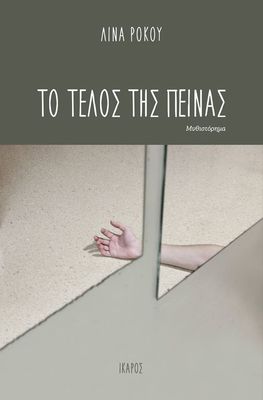
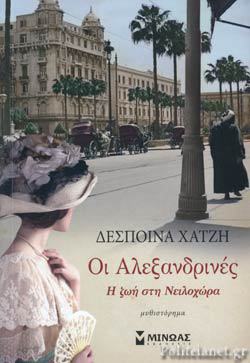 <
<
SDG 1
THE ALEXANDRIANS: Life in the Nile's country
Author: Despoina Chantzi
SUMMARY
Alexandria 1905. Agamemnon and Urania Vrana live under the care of their uncle and his French wife. Shortly before the outbreak of the First World, the intelligent Agamemnon lifts his stature in the Alexandrian merchant community, while his marriage to the charming Anastasia Yasoglou of Smyrna seals the coveted happiness. Agamemnon's sister Urania, after stumbling in love with a young Egyptian and her unfortunate marriage, becomes a staunch supporter of Huda Shaarawi, sending a message of national and feminist awakening to a woman's pansy. Her revolutionary nature leads her to Metaxas Greece, leaving Alexandria, in the trusted hands of her brother, her great daughter Catherine. A new life cycle begins for Catherine with the backdrop of the painful events of World War II. Half a century later, archaeologist Cleo Antipa, Catherine's daughter, is invited to work in Cairo at the invitation of Italian archaeologist Fabio Sorrentino. A visit to Alexandria's "own neighborhoods" brings to light an event that took place at the Battle of El Alamein in 1942, capable of redeeming three generations of women. Through a fictional review of two successive world wars, the life of the Greeks in the Nile country and the flagship Alexandria is outlined. The city of Bellevue, of contrasts, estates, bohemians, merchants, intellectuals, poverty and hauntings.
SDG2
THE END OF HUNGER
Author: Lina Rokou
"The end of hunger" is the story of unemployed Emma and a "different" junk dealer called San. The truth is that it's a surreal and allegorical story that passes a lot of messages with a central message (for me): how to give with your soul without sell yourself. I am sure that suits in a lot of SDGS but I chose to include this on SDGs1,2 as there are a lot of people who sell their organs so to survive their families.
Here's a translated part of this story, so to understand the reason that I chose it...
"...Now, I want to ask you a question. You must answer me if you want to give you the money you are entitled to and thus close the cycle of our first transaction. My question is: What is the next organ you intend to sell me?"
I felt embarrassed. I didn't know what to answer him. The experience of spleen removal proved to be vulgar and not at all traumatic, but I certainly had no intention of selling my other organs. At the bottom of the script, it was mine, I needed it to live and I didn't want to share it with anyone. I decided that I had to be honest with him.
- Look, San. At this time I am in dire need of money and that was the only reason that led me to you. I admit that I'm very happy with how you handled the whole thing. You performed the operation perfectly and my spleen is now in your hands or, to be more precise, in your sack. Give me the amount that corresponds to me and let's finish here.....
San smiled ironically, as if he didn't believe a word of what I had just said. I was slightly annoyed by his expression, but I didn't want to throw oil on the fire. In addition, I needed the money. .
He raised the index finger to the right hand and moved it to the left as if to say "no". Then he wrote something else in his notebook and stood up.
- If you open your bedside drawer, you will find 2,470 euros. I have to go now. I've been invited to buy an old refrigerator. See you again...."
Here you can vote for best title on SDG 2
http://www.tricider.com/brainstorming/2cXp11krrad
Go to discussion
SDG 1 and 2 in PORTUGUESE ART - 4 suggestions
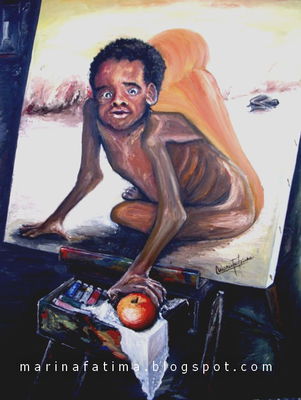
By the Artist Marina Fátima
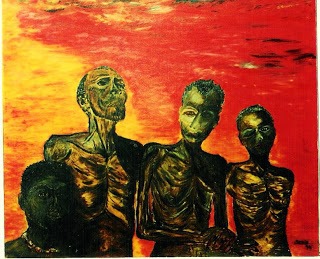
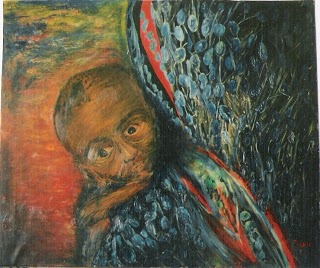
Two paintings by the artist Carlos Pires. He portraits Hunger in Africa.
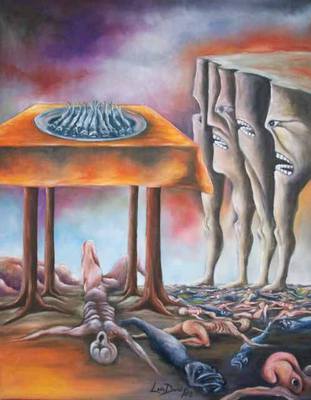
artist/painter: Luis Duro<
/p>
SDG 1 and 2 in TURKISH ART
SDG 1 AND 2 IN TURKISH ART
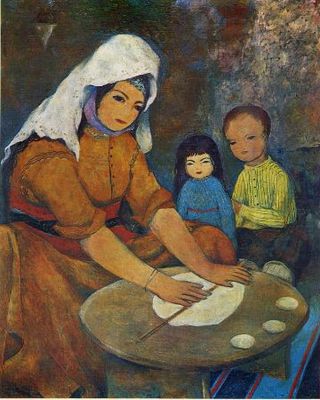
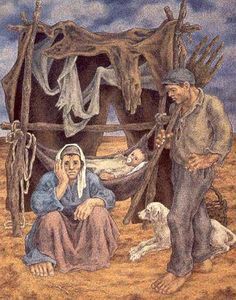
Neset GUNAL is a Turkish painter. In his works, poverty can easily be observed in arid land and the ruins.
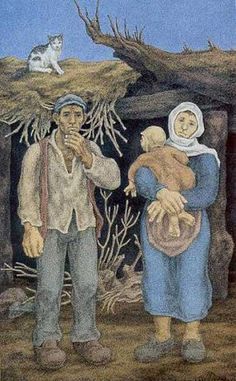 Nes'e ERDOK is a Turkish painter. She defines her art as the painting of the subaltern or about the forgotten or unrecognized ones. She is completely right in this regard since she has always painted the unnamed nobodies with a depressed look. She depicted the poverty in her art.
Nes'e ERDOK is a Turkish painter. She defines her art as the painting of the subaltern or about the forgotten or unrecognized ones. She is completely right in this regard since she has always painted the unnamed nobodies with a depressed look. She depicted the poverty in her art.
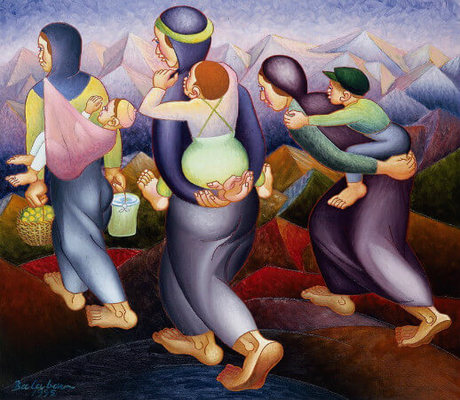
IBRAHIM BALABAN: Ibrahim Balaban, born in Bursa, is one of the best known artists in Turkey. He was inspired by people who struggle against poverty and hunger. He said: "I am an artist painting scenes of people from within Turkish daily life. Why scenes of people? Because I've always observed the lives and the lifestyles of people and placed these observations in my memory, and then conveyed the observations in my memories to paper, to compositions and then to canvas. "